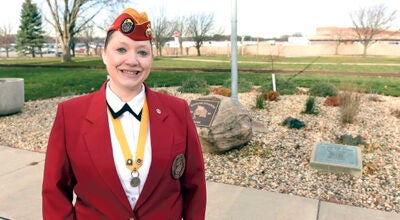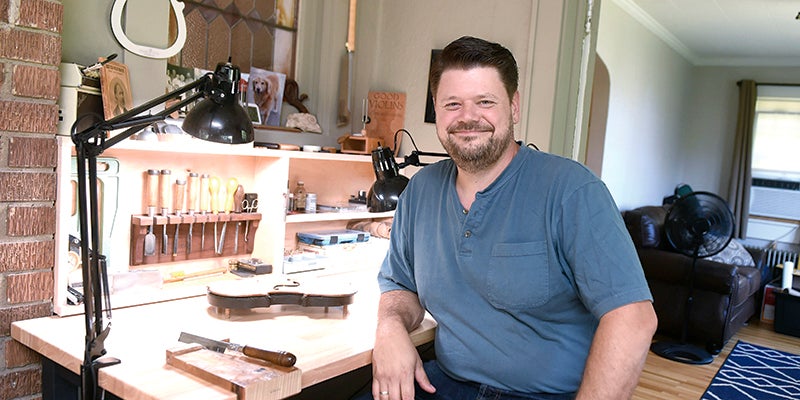Bugs to birds for your yard; Plants, insects key to attracting birds to your yard
Published 5:34 am Friday, July 14, 2017
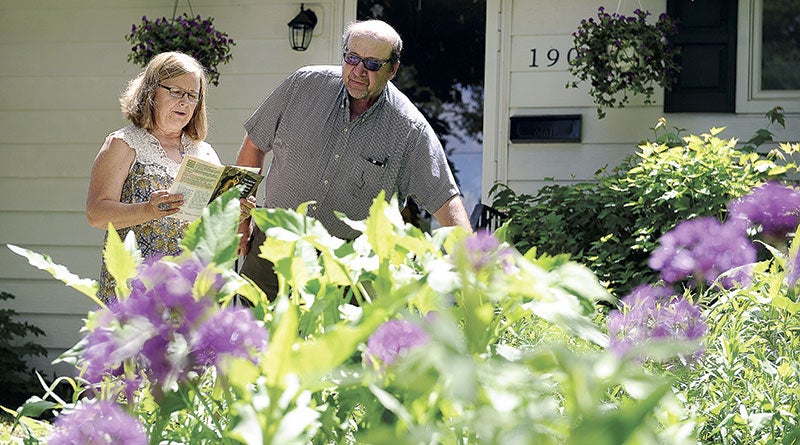
- Merlene and Jim Stiles look over the prairie plants and flowers they have in the front yard of their home in order to attract birds. Photos by Eric Johnson/eric.johnson@austindailyherald.com
The insect world provides the main food source for birds — and unless you have plants and trees that provide the insects or nesting potential, you won’t see many birds in your yard.
“We started planting our prairie in 2004,” said Merlene Stiles, referring to herself and her husband, Jim, who worked specifically to plant species that would provide food for birds.
Over a decade later, the Stiles’ have a wide variety of prairie plantings, from asters, cone flowers and wild geraniums to allium, cup plants and butterfly weed. The front lawn is lush with other inclusions, including Culver’s root and little bluestem, a tall prairie grass.
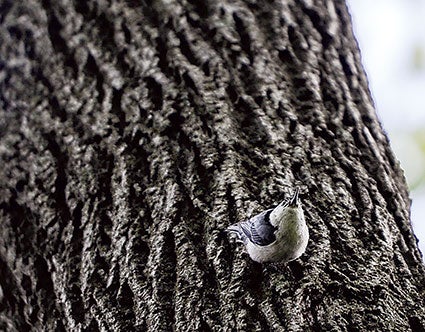
A nuthatch clings upside down to a tree in the Meyer’s backyard.
“I guess you could say we have a little bit of everything,” said Jim, who added he will fill in spots with different annuals from year to year.
The New England aster alone can attract 105 larval insects, said Merlene — a bounty for birds. She also makes a clear nectar (three parts water to one part sugar) for her hummingbird feeder.
The cup plant, on the other hand, has such strong leaves — that grow from the stem in a tight “cup” — that they can support water from which birds can drink, or toads that can sit in them.
Merlene said while most people focus on flowering plants and feeders to attract the winged friends, the insects that trees attract can also be significant. White pine, for instance, can be home to over 190 larval insects.
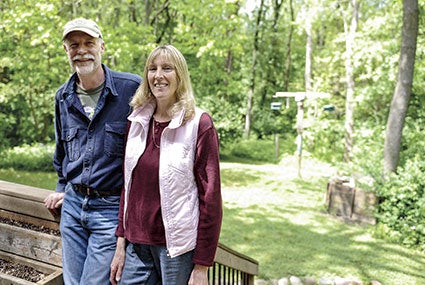
Chuck and Leslie Meyer have groomed their wooded backyard to provide plenty of habitat for their winged visitors.
But the grandaddy is the sugar maple, which attracts over 280 larval insects, according to the Audubon Society. You’ll also find wild grapes and milkweed in the yard. The grapes are also mega-attractors, while milkweed, as most know, attract monarch butterflies.
The birds have found the Stiles’ yard a good place to be. The couple often sees cardinals, robins, chickadees and nuthatches; Merlene was particularly excited to see a pileated woodpecker, the largest of the woodpeckers, pecking away at her sugar maple.
Near the grapes, she has seen cedar waxwings and goldfinches.
“I sit at the living room window, and love watching them,” she said of her prairie friends.
Just around the block is the home of Chuck and Leslie Meyer, whose backyard looks more like a small forest than an urban property.
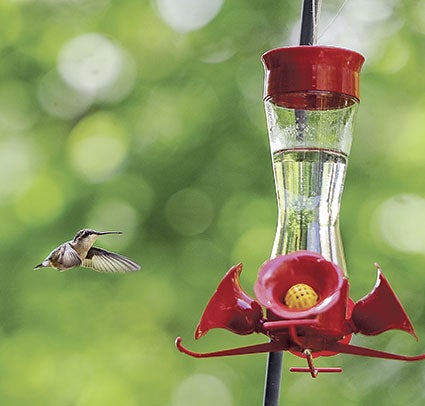
A hummingbird approaches a feeder attached to the deck of Chuck and Leslie Meyer.
“We were really lucky,” Leslie said, to find a lot upon which to build their home that provided natural beauty on the north side. The Meyers have multiple feeders for birds, but their great wealth may be in the trees and bushes they have. Some are native; others have been planted.
There is plenty of habitat and food supply in the Meyer back yard. Mulberry bushes, honeysuckle, black cherry trees and bitter nut hickory are plentiful. Feeders are filled with black oil sunflower seed; suet (the real stuff) is nearby. Hummingbirds, which are plentiful, too, enjoy nectar at another feeder.
The backyard, filled with Siberian elm and red oaks, provides a sheltering environment for birds who find the shaded, woodsy space more comfortable.
Songbirds such as cardinals and wrens find the area particularly appealing, said Chuck.
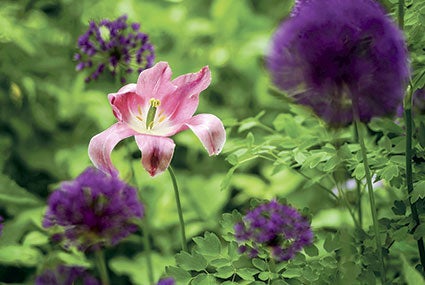
Bright flowers draw insects to the yard of Jim and Merlene Stiles, which in turn lures the birds they like to see.
“And that is the way it is with some species,” he said. “Some like this type of area, others might like the wide open spaces. Robins would be ones that like the more open areas; bluebirds, too. And then you have the birds that prefer the marshes, the swamps or the water, like the yellow-throated warbler, the red-wing blackbird — and, of course, your egrets and herons.”
The dead trees are favorites of the woodpeckers, he said, who nest in the trunks.
During one day in mid-May, Chuck counted 12 different species of warblers — the Wilson warbler and magnolia warbler among them — in his backyard; all told, he has counted up to 30 species of birds who have visited.
One night, he heard a different kind of singing, “and I could not figure it out,” he said. With a bird book always nearby, he finally realized what it was: a Carolina wren, a bird rarely seen in southeastern Minnesota.
“That was pretty cool,” he said.
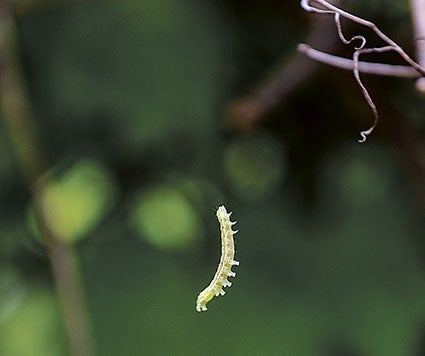
An inchworm lowers itself from a grape vine at the Stiles’ home. Worms and other insects are natural lures in getting birds into a yard.




